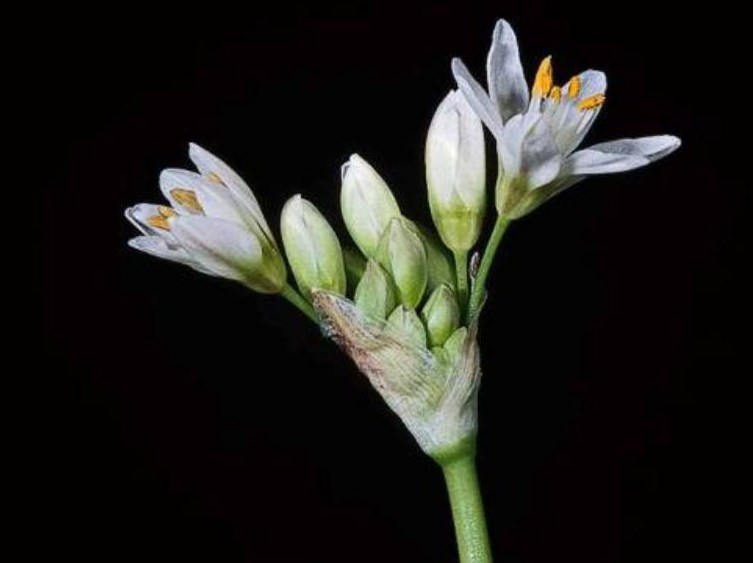Created by: Elizabeth D. Brusati
Created on: Wednesday, Jan 27th, 2016
Created on: Wednesday, Jan 27th, 2016
Yes or No:
Yes
Points:
1
Confidence Level:
Very High
Answer / Justification:
"Widely naturalized" according to ARS-GRIN. USDA PLANTS shows it in California, Mississippi, Alabama, South Carolina, Tennessee, but it's not listed by Southeast EPPC.
Reference(s):
Yes or No:
Yes
Points:
2
Confidence Level:
Very High
Answer / Justification:
"Widely naturalized" according to ARS-GRIN. Naturalized in six California counties.
Reference(s):
Yes or No:
Yes
Points:
2
Confidence Level:
High
Answer / Justification:
Mostly a weed of disturbed sites, gardens, and urban areas. Mentioned as an environmental weed in Victoria, Australia, by Randall 2012 but the current invasive plant website does not mention. Information from Queensland states that it is an environmental problem in temperate coastal areas of Victoria, South Australia, New South Wales and Western Australia, and has spread into riparian areas, wetlands, estuarine areas and coastal sand dunes.
Reference(s):
Yes or No:
Yes
Points:
3
Confidence Level:
High
Answer / Justification:
Mostly a weed of disturbed sites, gardens, and urban areas. Mentioned as an environmental weed in Victoria, Australia, by Randall 2012 but the current invasive plant info for Victoria does not mention it. Listed on the California Noxious Weed List due to impacts on agriculture: imparts an undesirable garlic or onion type flavor to contaminated food products including cereal grains, milk, meat, eggs, and poultry. Information from Queensland states that it is an environmental problem in temperate coastal areas of Victoria, South Australia, New South Wales and Western Australia, and has spread into riparian areas, wetlands, estuarine areas and coastal sand dunes.
Reference(s):
Yes or No:
No
Points:
0
Confidence Level:
High
Answer / Justification:
Other species in the genus are listed as naturalized but none marked as an environmental or noxious weed.
Reference(s):
Yes or No:
Yes
Points:
2
Confidence Level:
High
Answer / Justification:
Areas in Spain, Australia, South Africa, and part of the US match California. Other areas don't. GBIF map = http://www.gbif.org/species/2855519
Reference(s):
Yes or No:
No
Points:
0
Confidence Level:
Medium
Answer / Justification:
Cannot find any information on impacts on native plant communities other than that it can spread into them.
Reference(s):
Yes or No:
No
Points:
0
Confidence Level:
High
Answer / Justification:
No mention of this.
Reference(s):
Yes or No:
No
Points:
0
Confidence Level:
Medium
Answer / Justification:
No mention of it being toxic. Has been cultivated which implies that it's edible.
Irina: Many species in Alliaciae are known to be toxic to domestic dogs and cats. Not sure if that extends to this species
Reference(s):
Yes or No:
No
Points:
0
Confidence Level:
High
Answer / Justification:
Grows about 0.5 m tall. No indication that it creates dense stands that outcompete other vegetation.
Reference(s):
Yes or No:
Yes
Points:
1
Confidence Level:
Very High
Answer / Justification:
Reproduces both by seed and vegetatively by underground bulblets.
Reference(s):
Yes or No:
Yes
Points:
1
Confidence Level:
Medium
Answer / Justification:
In some plants aerial bulbils are produced that are clones of the parent plants. I'm assuming these could detach and create new plants and therefore would count for this question.
Reference(s):
Yes or No:
Yes
Points:
1
Confidence Level:
Very High
Answer / Justification:
Yes, numerous black seeds that are highly viable.
Reference(s):
Yes or No:
No
Points:
0
Confidence Level:
Medium
Answer / Justification:
No information on seed numbers per plant so I am being conservative and answering no.
Reference(s):
Yes or No:
Points:
Confidence Level:
Answer / Justification:
No information
Reference(s):
Yes or No:
Yes
Points:
1
Confidence Level:
Medium
Answer / Justification:
Given that it's a small forb, I am assuming yes.
Reference(s):
Yes or No:
No
Points:
0
Confidence Level:
Very High
Answer / Justification:
Flowers May - June in California so only two months. (But from Sept-Jan in Australia.)
Reference(s):
Yes or No:
No
Points:
0
Confidence Level:
High
Answer / Justification:
Seeds and bulbs don't have obvious adaptations for this and this form of dispersal is not mentioned.
Reference(s):
Yes or No:
Yes
Points:
1
Confidence Level:
High
Answer / Justification:
Seeds can be dispersed by wind and water.
Reference(s):
Yes or No:
Yes
Points:
1
Confidence Level:
High
Answer / Justification:
Seeds can be dispersed in garden waste, while bulblets are dispersed in contaminated soil.
Reference(s):
Queensland information: http://keyserver.lucidcentral.org/weeds/data/080c0106-040c-4508-8300-0b0...
Reviewed by Irina Irvine, NPS Santa Monica Mountains NRA
- < 13 : accept (low risk of invasiveness)
- 13 - 15 : evaluate further
- > 15 : reject (high risk of invasiveness)
PRE Score:
16
Number of questions answered:
19
Screener Confidence (%):
80.0
Organization:
Evaluation visibility:
Public - accessible to all site users

